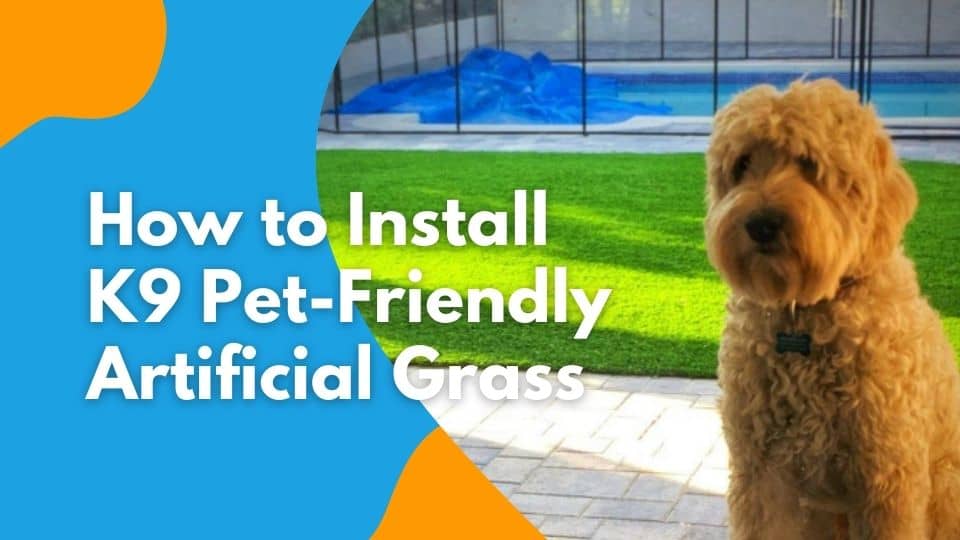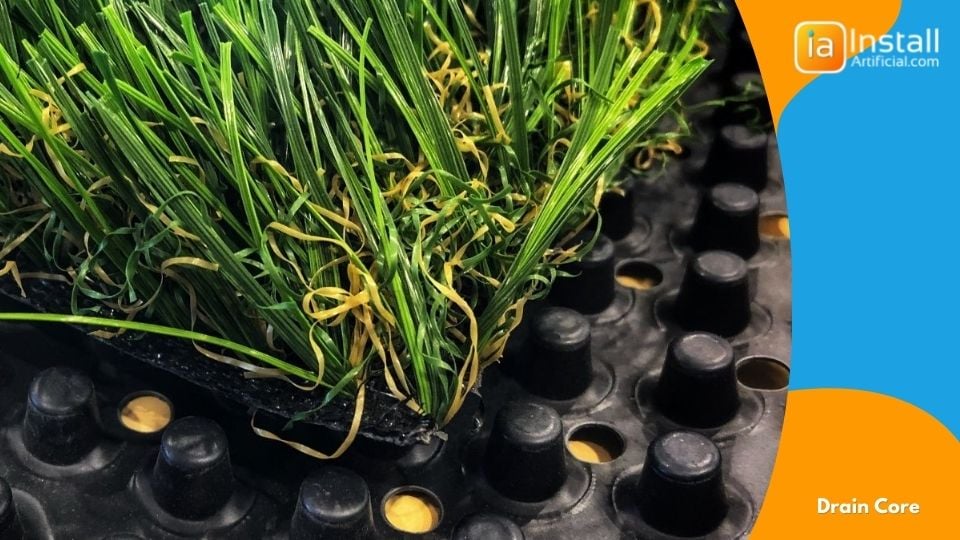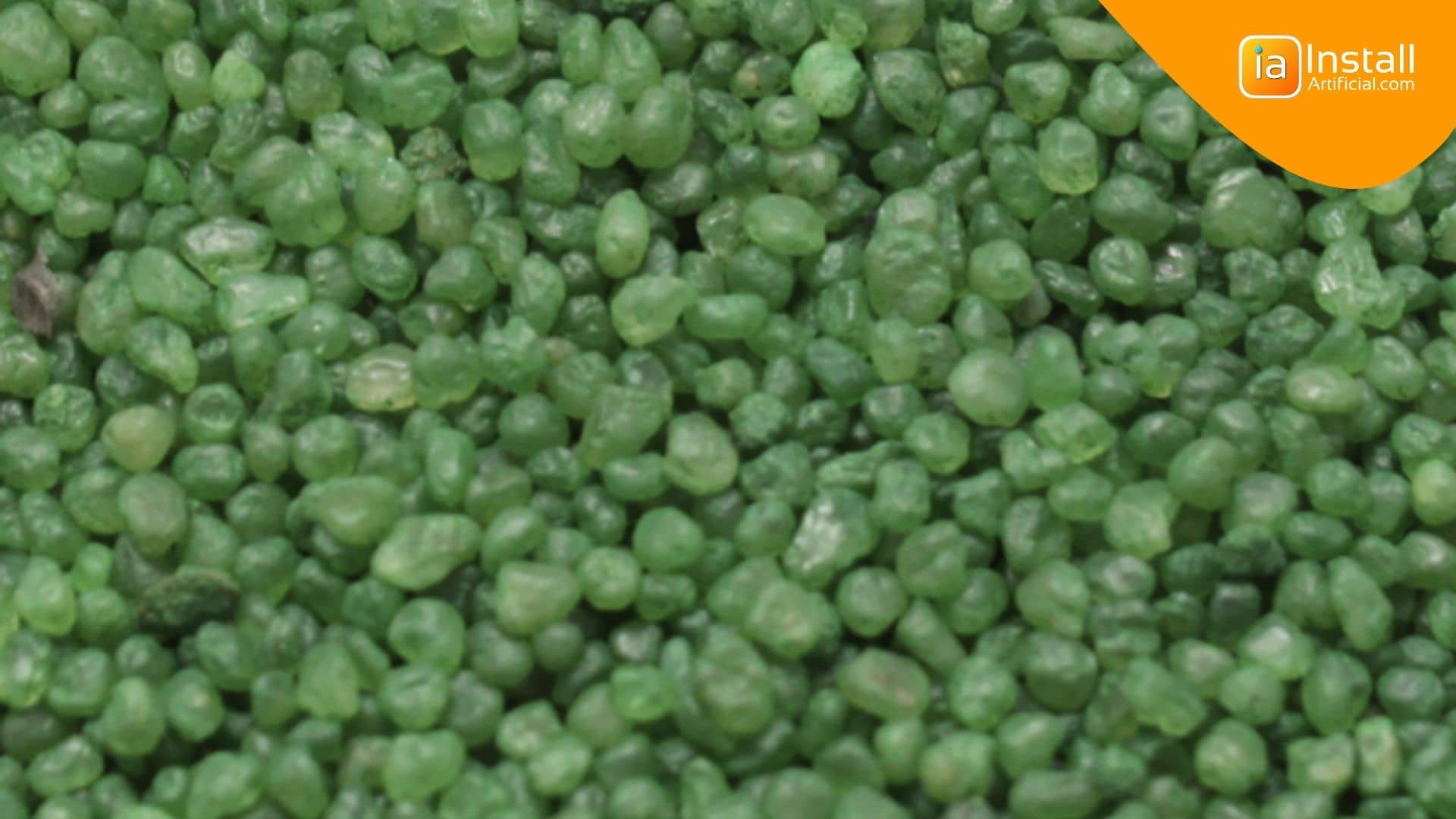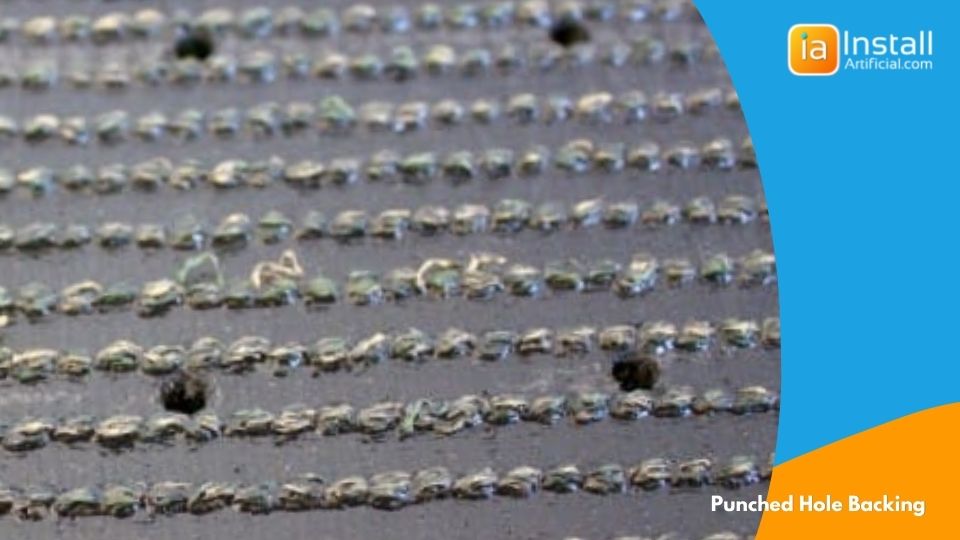
Learn how to install K9 pet turf artificial grass systems for dogs. Discover the best and most used approaches to proper pet turf drainage, and why it's so necessary....
We always recommend that pet owners have advanced drainage, ventilation, and potentially even wash systems installed. This will provide you with the easiest and simplest cleaning process. The extra drainage will make sure urine gets properly flushed from underneath the surface of your turf, reducing smells. The ventilation and airflow also greatly reduce any odors that may occur from regular pet usage. Drain Core is the most commonly used drainage grid underneath fake grass for pets.

Antibacterial infill for artificial grass is designed with the intention to fight bacteria and allow air to penetrate the surface, which is very important in pet relief areas. Its antimicrobial properties are great for long-term bacteria growth prevention. Antibacterial sand also has round and coated granules that are non-abrasive making it ideal for pets.
For pet-specific turf areas, manufacturers recommend making the installation nail-free for added durability and safety. This also makes it less likely that your dog will be able to damage or detach the artificial grass along the perimeter. To install artificial turf without nails, we build a frame along the perimeter using treated wood edging boards and will use heavy-duty staples to attach the pet turf to the frame. While this will save you some money by eliminating the need for other landscape edging, opting for nail-free will usually raise the cost of turf installation.
In general, four different types of infill are used for artificial grass installation, below we'll discuss how appropriate each infill option is for pets!
Silica sand is the most affordable infill for pet turf. Its granules are large enough to minimize compaction while also allowing air access, but will still over time clump together which can affect drainage rate. This is an okay option, but there are much better alternatives that will help keep pet turf clean and odor-free.
An antibacterial sand infill is highly recommended for spaces where pets use the restroom and children play. With Microban technology, it's one of the best options to prevent the growth of bacteria, mold, and mildew on synthetic lawns. antibacterial infill provides advanced ventilation and its round granules are perfect for pet-friendly spaces.

As mentioned above, deodorizer for turf is a clean and porous material that is designed to kill the ammonia smell stemming from pet relief. This is used beneath the surface in most residential pet turf applications. For commercial spaces, turf deodorizer can also be applied on top of turf or mixed with antibacterial sand for the best performance. Note, turf deodorizer may leave white residue on the surface that is washable, yet annoying when wet.
Natural turf infills are usually made of tree bark or cork, such as Corkonut or Brockfill, and are rare to find. By its nature, natural infill should be one of the coolest options available because it’s so lightweight. It also contains and absorbs moisture, helping keep temps low. However, natural turf infills are still fairly new within the turf industry and we are unsure how they perform in terms of bacteria prevention as they create a moisture-abundant environment.
If the backing of artificial turf is permeable, it means that liquid can pass through the turf to properly drain underneath the surface. Most artificial grass backings are permeable. There are three types currently of turf backing available on the market: cloth backing, micro-hole backing, and punched hole backing.
Artificial grass with cloth backing can be beneficial because it is completely permeable. In other words, liquids on the surface will have access to the ground in every spot of the turf. However, some cloth backings will retain moisture, like a wet cloth. Even though liquids will drain through, the cloth will capture bacteria and dirt and act like a filter letting bacteria live within the backing. Also, a completely permeable cloth backing is generally less durable. Because of this, the turf material has less chance of survival in harsh conditions caused by salt, moisture, and UV rays.
When fake grass backing has punched holes, it will feature holes throughout the grass backing that are spaced 4-6 inches apart along the surface. This type of backing can sometimes slow water drainage, however, it doesn't absorb and hold bacteria which makes it ideal for pet relief areas. In our experience, punched-hole backing turf works best and provides the best results.

And there you have it, our recommendations when it comes to choosing materials for your pet-friendly turf installation. Request an estimate with us today to get your project started!